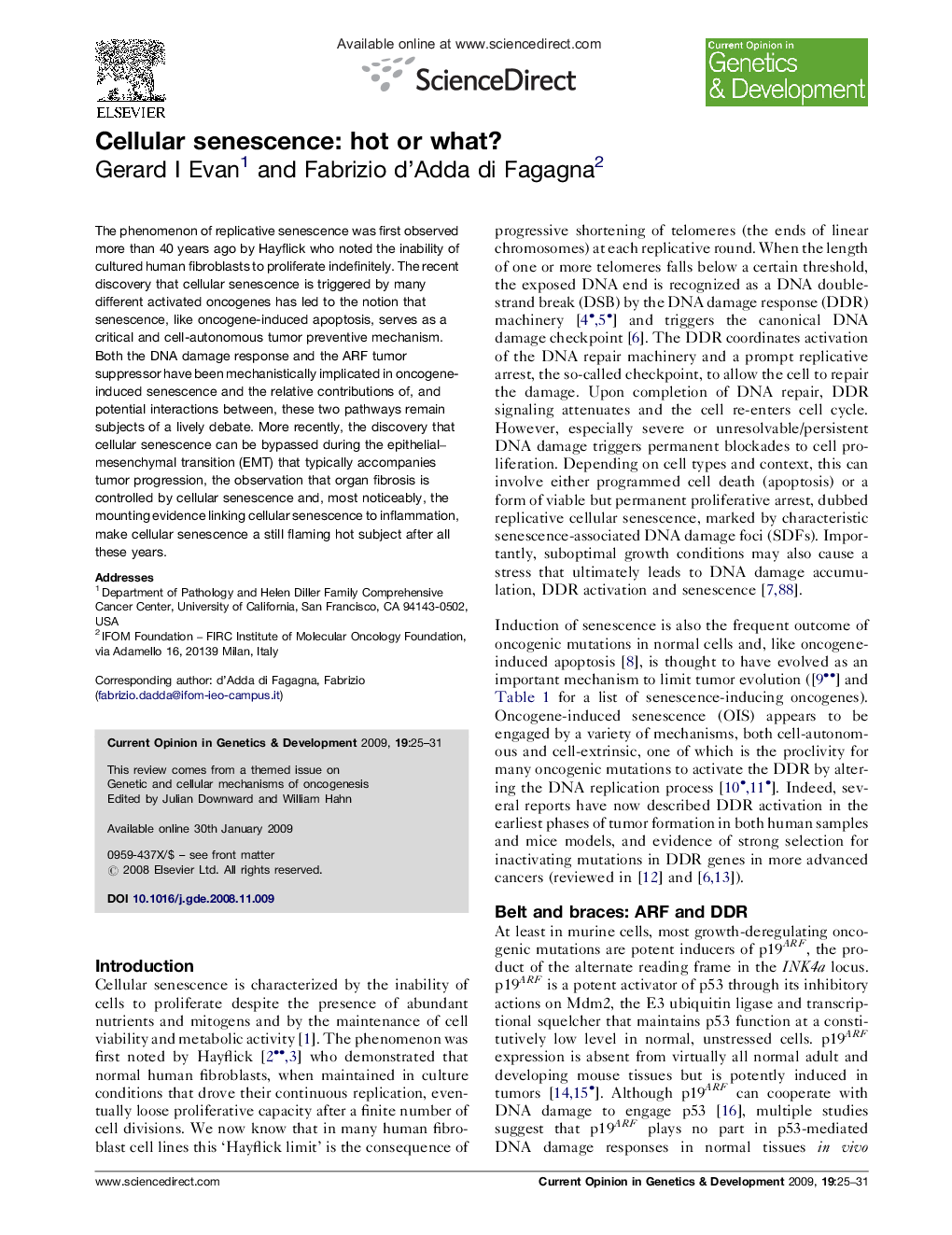| Article ID | Journal | Published Year | Pages | File Type |
|---|---|---|---|---|
| 2785209 | Current Opinion in Genetics & Development | 2009 | 7 Pages |
The phenomenon of replicative senescence was first observed more than 40 years ago by Hayflick who noted the inability of cultured human fibroblasts to proliferate indefinitely. The recent discovery that cellular senescence is triggered by many different activated oncogenes has led to the notion that senescence, like oncogene-induced apoptosis, serves as a critical and cell-autonomous tumor preventive mechanism. Both the DNA damage response and the ARF tumor suppressor have been mechanistically implicated in oncogene-induced senescence and the relative contributions of, and potential interactions between, these two pathways remain subjects of a lively debate. More recently, the discovery that cellular senescence can be bypassed during the epithelial–mesenchymal transition (EMT) that typically accompanies tumor progression, the observation that organ fibrosis is controlled by cellular senescence and, most noticeably, the mounting evidence linking cellular senescence to inflammation, make cellular senescence a still flaming hot subject after all these years.
